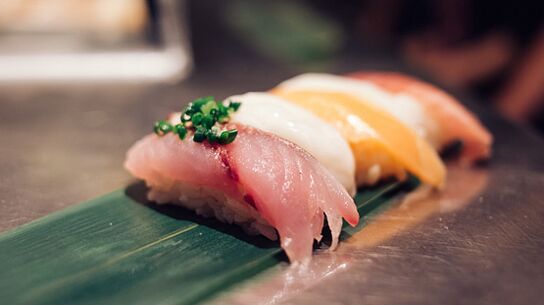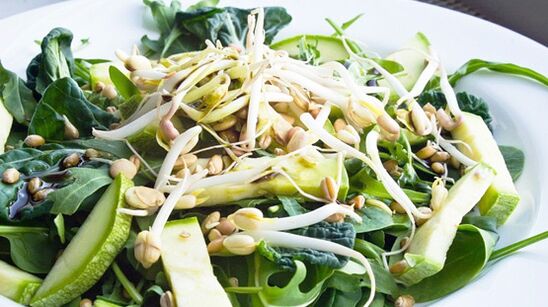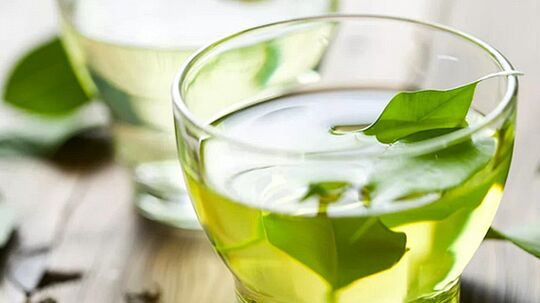
Let's say right away. Most of the "Japanese" diets on the net have nothing to do with Asian cuisine or the diet that will be discussed below., Typically, these pseudo-japanese dietHe suggests that you eat "bird-sized" portions of boiled cabbage, a couple of eggs and 100 grams of meat or fish per day, reduce the number of meals to three and stay in this mode for 2 weeks. No. !Such a meager diet is not suitable for an active working person.
Why is the Japanese theme and everything that comes under it so popular?
The Land of the Rising Sun will always be fascinating and incomprehensible to a European. Perhaps this comes from the fact that Japan was for a long time a closed state for Western civilization. What are they, the Japanese, in our traditional view of? They are technical but believe in spirits; conservative, but invented the "Ganguro" style; restrained, but capable of wild detachment; Appreciate life even in a short stalk, but historically elevated suicide to the rank of a respectable ritual. The islanders gave the world some of the best amazing carvings and Pokémon. Plus, they're slim and have a long life spansurvive. Why?
You can talk about genetics and physiology, or you can answer like this: We are what we eat.,
The article is based on the book The Japanese Diet by Alyssa Tanaka.
Traditional Components of Japanese Cuisine
i lay in the shade
my rice pushes for me
Mountain stream.
rice
For the Japanese, rice, like bread for us, is the "head of everything. " It is a healthy source of carbohydrates that do not containgluten free, The inhabitants of Japan eat a variety of rice, but prefer to eat brown rice cooked with sesame oil.
fish and seafood

Fish dishes are second in terms of quantity in the daily diet of residents of the Land of the Rising Sun. The protein composition of fish meat is complete, easily digestible and contains essential amino acids necessary for a person. However. , the Japanese do not eat smoked or salted fish - only fresh sea or fresh water. The fat contained in fish is fusible and will not accumulate on your thighs with vile cellulite, but it will give the body full polyunsaturated fatty acids.
sea kelp
Seaweed (aka kelp, brown seaweed) is widely used in Japanese cuisine: it is added to rice, fish dishes or soy dishes. Laminaria is a good prevention of thyroid diseases, atherosclerosis and heart attacks, which is rich in iodine, minerals and macronutrients. In addition, the inhabitants of the Japanese islands use dried kelp instead of the usual table salt.
vegetables and legumes
Real Japanese cuisine is impossible without vegetables. This, of course, all kinds of cabbage, radishes, garlic, green onions, cucumbers and tomatoes, eggplants, carrots, peppers, legumes, asparagus, spinach, celery and all kinds of salads.
sprouts and sprouts

Valuable sources of nutrients, since sprouts are eaten in "living" form - that is, their benefits are not killed by heat treatment. In addition, sprouted grains are more useful than "sleeping" grains, since all life processes in itare activated.
Advice: Sprouts can be purchased at any large hypermarket, or you can sprout the grains yourself on your windowsill. Take 2 tablespoons of seeds or grains, place them in a container and fill with water at room temperature so that the liquid level is at the surface of the grain. 6 cm above. Cover the container with gauze, leave for 7-12 hours. Then drain the water and wash the beans thoroughly. Sprouts should be kept in the dark, and they can be served with salads, soups andCan be eaten as a substitute for greens for a second course. Just don't make large stock for future use.
fruits and berries
Instead of the traditional pastries and confectionery for us, Asians eat fruit as a dessert. At the same time, it is necessary to eat fruits and berries in season, that is, strawberries should not be eaten in winter.
Spices and Spices
Curry, black, red and cayenne pepper, fennel, turmeric, garlic, horseradish, dill, ginger (fresh and pickled), basil, mustard, cilantro, cinnamon are commonly added to many dishes. But in contrast, the use of bay leafSalt is also not held in high esteem, instead dried kelp powder is used (as we have already mentioned), soy sauce or sesame oil.
green tea

It is believed that the tea has many medicinal properties: strengthens teeth, soothes the spirit, treats heart disease, neutralizes poisons and helps to achieve longevity. Japanese tea drinkingThe basic principle is: "drank - share, refill - drink. " The second cup of tea is considered the most valuable (especially if you drink tea in the cup itself).
Advice: To make the tea as fragrant and as useful as possible, first wash the teapot with boiling water and close the lid to heat it. Then wash the tea leaves with hot water and pour in a teapot at the rate of 1-2 teaspoons. For a cup of tea, fill the tea leaves with water that is no hotter than 80 °C. First, pour water into one-third of the teapot and let it stand for 3-5 minutes. Next, until halfway up. Stir and leave again, but for 1 minute.
Tofu (bean curd)
It's the bean curd that provides complete protein for Asian vegetarians: 240 grams of tofu contains the same amount of protein as two chicken eggs. 100 grams of tofu contains 20% more calcium than 100 grams of cow's milkSoy protein is up to 95% digestible, it is rich in lysine, calcium, iron, vitamins B, E and K. Tofu is an excellent dietary product and for all its high nutritional value, bean curd is very low in calories. It has littleCarbohydrateAnd no cholesterol. Unlike meat, which is acidic, tofu is alkaline. And nutritionists say an alkaline environment is more beneficial than an acidic environment and recommend eating at least 25 grams of soy protein daily.
benefits of japanese diet
Many people cannot tolerate a diet regimen simply because diets are highly restrictive in taste, sometimes overly restrictive in what we eat. Enjoyment of the taste of food is pleasure that is long-lasting and well-being. Or the mood cannot be left without harm. The real Japanese diet consists of delicious dishes made from products that are healthy for the body and low in calories.
Cons of the Japanese Diet
The diet assumes that you have to master certain dishes of Asian cuisine, and also requires some adaptation. This diet is technically more complex than many others, where you only consume certain foods and for a short period of time. or until you get sick from them.
Studying Japanese cooking techniques can be regarded as another skill in your arsenal, as much as the ability to sit on a twine—wondering it may be, to be proud of.
So, from the list of kitchens you will need,
- a skillet, or skillet, for quick frying or frying;
- pan with non-stick coating;
- double boiler (instead of a double boiler, you can put a metal colander in the pan);
- food processor, mixer;
- wooden utensils made of beech, cherry or maple for stirring cooked food: wood does not absorb odors and lasts a long time;
- wooden skewers or skewers.
for cooking you will need,
- different varieties of rice;
- noodles;
- mushroom;
- spices and herbs;
- Sauces: soy, teriyaki, fish, oysters.
Japanese food products shouldn't be a big problem for you, now you can buy them in any hypermarket or you can easily replace them with some of our ingredients. Don't be afraid to experiment.
Japanese diet: basic principles

The Japanese diet menu includes many soups and vegetable dishes., This is a great strategy for weight loss, as such dishes are low in calories and good for digestion. And the vegetable dietary fiber in the composition of vegetables will give the necessary satiety to your stomach, so that you will not feel excruciating bouts of hunger.
number of calories on the menuThe drink is indicated without adding sugar or cream. Therefore, do not forget to add 16 kcal per 1 teaspoon to your daily caloric intake. sugar and 36 kcal per spoonful of cream (if you use them). In other words -Sweetened coffee - reduce the volume of the main serving of the meal. It is recommended to use soy instead of cow's milk.
The optimal number of calories consumed per day should be in the range of 1200-1400 kcal (for women). It is this number of calories that is sufficient for the life of the body at rest, before eating and at average ambient temperature. On the one hand, reducing calories to 1200-1400 does not lead to pathological changes in metabolism, on the other hand, it allows you to live your day to the fullest (breakdowns are not felt), and to take fitness classes from your burning. Energy will be provided. own fat stores.
The Danger of a Diet That Reduces Calories Below 1200,
- With rapid weight loss, you will quickly gain the lost kilograms or even more;
- a poor diet will negatively affect the condition of the skin, hair and nails, and damage the muscles;
- The more muscle you lose, the slower your metabolic rate will be, making it harder to lose or maintain weight.
The main rules of the Japanese diet
- Do not try to artificially speed up the process of losing weight, reducing the number of calories (we wrote about the results above). You should not lose more than 1 kg per week.
- stay in the 1200-1400 calorie range per day, Be sure to supplement with vitamins and minerals.
- maintain energy balanceBetween the energy received and consumed. Eating gives us calories, with the help of fitness we expend. Violation of this balance, unfortunately, leads to excess weight.
- The key to weight loss in the Japanese diet is a variety of food.and transition from small portioned, fatty meat dishes to a healthier diet based on fruits, vegetables and seafood.
Asian nutritionists have developed a healthy eating pyramid that can be used as a guide when planning your diet and the proportions of certain foods in it.
Tips for Effective Weight Loss on the Japanese Diet
- Keep track of your physical activity and diet (calorie count). This makes it easier to see progress;
- strictly adhere to the chosen meal plan and serving size;
- Do not think of food as "good" or "bad", enjoy the process of eating;
- If on any day you allowed yourself high-calorie foods, be sure to cut down on the caloric content of your diet the next day;
- Do aerobic exercise.
You may initially lose more than the recommended one kilogram per week. This is due to a lack of fluid in the body. Then the weight loss will slow down, but don't despair - it's a completely normal healthy weight loss. process.
Sample Japanese Diet Menu for 14 Days (Table)
| Day | menu for the day | |||
| breakfast | lunch | breakfast | lunch Dinner) | |
| One |
|
|
Apple. Calories: 80. |
|
| total daily caloric intake1428 kcal | ||||
| 2 |
|
|
1 cup of coffee without sugar. Calories: 5. |
|
| total daily caloric intake1386 kcal | ||||
| 3 |
|
|
1 glass soy milk. Calories: 150. |
|
| total daily caloric intake1334 kcal | ||||
| four |
|
|
Calories: 30. |
|
| total daily caloric intake1424 kcal | ||||
| 5 |
|
|
1 orange (fruit salad) Calories: 141. |
|
| total daily caloric intake1443 kcal | ||||
| 6 |
|
|
|
|
| total daily caloric intake1433 kcal | ||||
| 7 |
|
|
1 glass soy milk. Calories: 150. |
|
| total daily caloric intake1392 kcal | ||||
| eight |
|
|
1 glass vegetable juice. Calories: About 70. |
Calories: 576. |
| total daily caloric intake1424 kcal | ||||
| 9 |
|
|
120 grams of fruit yogurt. Calories: 60. |
|
| total daily caloric intake1440 kcal | ||||
| ten |
|
|
10 young carrots. Calories: 38. |
|
| total daily caloric intake1303 kcal | ||||
| eleven |
|
|
|
|
| total daily caloric intake1290 kcal | ||||
| 12 |
|
|
|
|
| total daily caloric intake1441 kcal | ||||
| 13 |
|
|
1 cup cherries. Calories: 31. |
|
| total daily caloric intake1430 kcal | ||||
| fourteen |
|
|
10 young carrots. Calories: 38. |
|
| total daily caloric intake1272 kcal |
If you're a little intimidated by the names of dishes (that you've probably never cooked)—don't worry, there are recipes for all the dishes that appear in the Japanese diet.
we save the result
You need to quit the diet, gradually increasing the number of calories to a level at which you can maintain your weight unchanged. Just include 100 calories in your diet for 14 days. Also the weight should be under control. If the scale continues to lose weight, add another 100 calories over the next 2 weeks and check the scale again. Once the weight stabilizes, you determine for yourself how many calories it takes to maintain a steady weight. is required.
100 calories is:
- pork, beef - 80 g;
- 1 boiled chicken breast;
- 150 grams of fish;
- one egg or 2 yolks, or 5-6 proteins;
- a glass of milk;
- yogurt - 125 g;
- a glass of kefir;
- a small piece of bread;
- Beans - 25 g (3-4 tbsp);
- fresh cabbage - 1 kg;
- fresh cucumber - 750 g;
- 3-4 large carrots;
- a large potato tuber;
- 590 g tomatoes;
- 625 g sauerkraut;
- banana - less than 1 pc . ;
- apricots - 210 g;
- fresh strawberries - 325 g;
- 1 large apple;
- 1 large orange;
- 2 kiwis;
- peaches - 250 g;
- 4 tangerines;
- plum - 200 g;
- 1 grapefruit;
- watermelon - 285 g;
- 1 large pear;
- watermelon - 190 g;
- 15-20 large grapes;
- any nuts (2 tbsp) - 15 g;
- Noodles - a palm-sized serving;
- muesli, oatmeal - 1/3 cup;
- Porridge on the water - 5-6 tbsp. leach portion.
We hope that you will be successful! May you be successful!
















































































